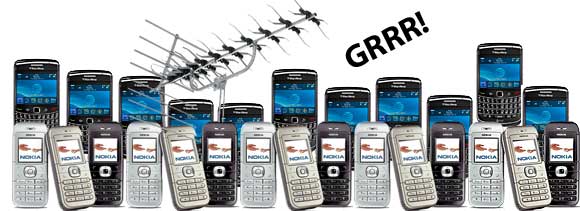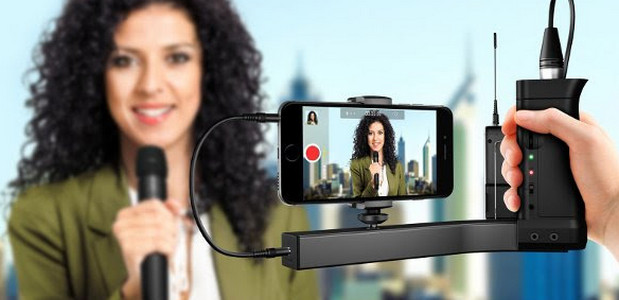
We have to say we weren’t too impressed by Apple dragging other handset manufacturers into their press conference yesterday – the issue was about the iPhone 4 dropping calls, not the performance of their competitors’ phones – and both Nokia and RIM have responded angrily.
RIM co-CEOs Mike Lazaridis and Jim Balsillie were mightily displeased to see their Blackberry Bold 9700 being used as a demonstration device to prove that the signal loss problem afflicted all manufacturers.
Describing Apple’s situation as a “self-made debacle” the two let rip in no uncertain fashion:
“Apple’s attempt to draw RIM into Apple’s self-made debacle is unacceptable. Apple’s claims about RIM products appear to be deliberate attempts to distort the public’s understanding of an antenna design issue and to deflect attention from Apple’s difficult situation. RIM is a global leader in antenna design and has been successfully designing industry-leading wireless data products with efficient and effective radio performance for over 20 years.
During that time, RIM has avoided designs like the one Apple used in the iPhone 4 and instead has used innovative designs which reduce the risk for dropped calls, especially in areas of lower coverage. One thing is for certain, RIM’s customers don’t need to use a case for their BlackBerry smartphone to maintain proper connectivity. Apple clearly made certain design decisions and it should take responsibility for these decisions rather than trying to draw RIM and others into a situation that relates specifically to Apple.”
Nokia were equally unchuffed, unleashing the following statement after Apple’s conference.
“Antenna design is a complex subject and has been a core competence at Nokia for decades, across hundreds of phone models. Nokia was the pioneer in internal antennas; the Nokia 8810, launched in 1998, was the first commercial phone with this feature.
Nokia has invested thousands of man hours in studying human behavior, including how people hold their phones for calls, music playing, web browsing and so on. As you would expect from a company focused on connecting people, we prioritize antenna performance over physical design if they are ever in conflict.
In general, antenna performance of a mobile device/phone may be affected with a tight grip, depending on how the device is held. That’s why Nokia designs our phones to ensure acceptable performance in all real life cases, for example when the phone is held in either hand. Nokia has invested thousands of man hours in studying how people hold their phones and allows for this in designs, for example by having antennas both at the top and bottom of the phone and by careful selection of materials and their use in the mechanical design.”
Undignified stuff
We still remain pretty unimpressed with Apple’s behaviour over this whole ‘Antennagate’ debacle.
They’ve gone from outright denial to blaming the customer for ‘holding it wrong’ to attacking other manufacturers while the bottom line remains: the iPhone 4 drops more calls than its 3GS predecessor and needs a bit of plastic around it to make it work reliably for all users – and no amount of slagging off other handsets will alter that uncomfortable fact.
It looks like the bad press isn’t going away either – a fact echoed by this rather damning video report on the BBC and this feature in MacWorld:
Apple’s press conference was a strange mix of finger pointing, random sales figures and statistics and–surprise!–some actual accountability and solutions for the iPhone 4’s antenna woes…
After a long-winded spiel about the universal antenna problem within the cell phone industry, the iPhone 4’s successful sales records, and the low number of antenna-related AppleCare complaints, it felt like “Antennagate” was something dreamed up by the press. I wish all of the dropped calls I’ve experienced were just a dream. And you can be certain that the personal iPhone 4 hell my colleague Melissa Perenson experienced with her three units (she’s on her fourth handset now) was not just a figment of her imagination.


